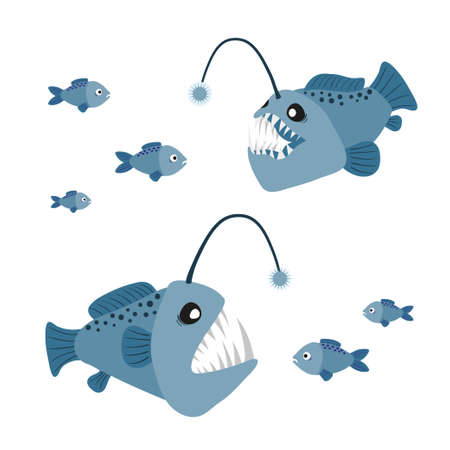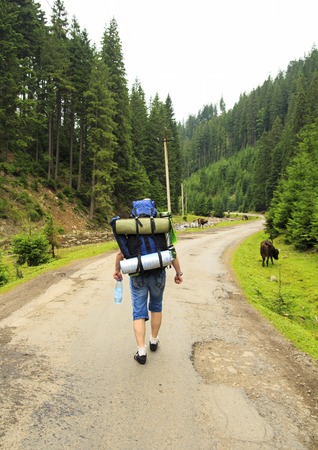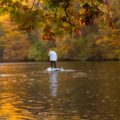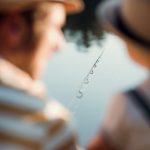Layered Clothing for Unpredictable Weather
When it comes to fall fishing trips, the weather can be all over the map. Crisp mornings can quickly turn into sunny, warm afternoons before dipping back down as the sun sets. To stay comfortable and ready for whatever nature throws your way, dressing in layers is key. Start with a moisture-wicking base layer—think synthetic materials or merino wool—to keep sweat off your skin and prevent chills. Add an insulating mid-layer like a fleece or lightweight puffy jacket for warmth during those early hours when you’re rigging up in the dark. Top it off with a weather-resistant outer shell that blocks wind and repels light rain, so you’re not caught off guard by sudden showers or blustery gusts. Don’t forget essentials like a beanie, gloves, and wool socks to round out your outfit. By layering smart, you’ll be able to adjust quickly as temperatures rise or fall, ensuring you stay focused on fishing—not fighting the elements.
Quality Waders and Waterproof Boots
When you’re heading out for a fall fishing trip, staying dry isn’t just about comfort—it’s about safety and success. American rivers and lakes in autumn can be chilly, unpredictable, and sometimes slippery. That’s why investing in quality waders and waterproof boots is essential gear for anglers who want to fish longer and safer. The right pair keeps you protected from cold water, sharp rocks, and unexpected currents, letting you focus on landing that trophy catch instead of worrying about soggy socks.
Why Staying Dry Matters
Wet clothes sap your body heat fast, especially during cool fall mornings. Hypothermia becomes a real risk if you’re not properly outfitted. Even minor leaks or poorly sealed seams can ruin your day on the water. Reliable waders and boots keep you insulated from the elements so you stay comfortable for hours.
Choosing Materials: What Works Best in America
| Material | Main Benefit | Best For |
|---|---|---|
| Neoprene | Superior warmth and durability | Cold streams & late fall trips (North/Midwest) |
| Breathable Fabric (Gore-Tex, etc.) | Lightweight and less sweaty, still waterproof | Mild climates, active anglers (Pacific Northwest/South) |
| PVC/Nylon | Budget-friendly, quick-drying | Short outings or backup gear (all regions) |
Fit Tips: Getting It Right for American Waters
- Go for adjustable straps: Layers matter in fall—look for waders with adjustable suspenders to fit over jackets or base layers.
- Bootfoot vs Stockingfoot: Bootfoot waders are quick to put on and great for muddy banks common in Southern or Eastern lakes. Stockingfoot waders paired with separate boots give better ankle support—important for rocky Western streams.
- Sizing: Always try them on with your typical fishing socks to avoid tightness that restricts movement or loose fits that let cold water seep in.
- Pocket placement: Handwarmer pockets are a lifesaver when temperatures drop—look for waders designed with chilly mornings in mind.
Bonus Tip: Maintenance Matters!
After each trip, rinse off mud and debris. Hang your gear upside down to dry completely before storage. This extends life and prevents mold—so your investment lasts through many more falls on the water.

3. Fall-Specific Tackle and Bait
When fall rolls in, successful anglers know it’s time to tweak their gear for changing fish behavior. Water temperatures drop, daylight hours shrink, and popular game fish like bass, walleye, and trout shift their feeding patterns. To stay ahead of the bite, you’ll want to stock your tackle box with lures and bait that mimic what’s naturally abundant in U.S. waters during autumn.
Match the Hatch: Seasonal Lure Selection
Fall is when many baitfish species—like shad, minnows, and young sunfish—become prime targets for hungry predators. Opt for crankbaits, jerkbaits, or soft plastics in silver, white, or subtle gold hues to match these forage fish. Lipless crankbaits and spinnerbaits excel when covering water quickly, especially around weedlines or drop-offs where fish stage before winter. Don’t forget topwater plugs for those brisk mornings; aggressive surface strikes aren’t uncommon on crisp fall days.
Local Bait: Go Native
If you prefer live bait, always choose what’s local. Nightcrawlers, crayfish, and small minnows work wonders on most American lakes and rivers this time of year. Check in with a nearby bait shop—they’re dialed into what’s currently working in your area and can steer you toward the best options for regional species.
Tackle Adjustments: Size Down & Toughen Up
As the season progresses, fish often get more selective. Downsizing your hooks and line can make all the difference when dealing with pressured fish or clear water conditions. However, don’t skimp on strength—autumn game fish are bulking up for winter, so use abrasion-resistant leaders and dependable knots to handle hard-hitting strikes without losing your catch.
By tailoring your tackle and bait to fall conditions and local prey, you’ll boost your odds of landing more—and bigger—fish on every trip this season.
4. Reliable Navigation and Safety Tools
When you’re planning a fall fishing trip, especially in remote or unfamiliar locations, having the right navigation and safety gear isn’t just smart—it’s essential. Shorter days, unpredictable weather, and changing landscapes mean you need to be prepared for anything. Here’s a quick rundown of must-have items that every American angler should pack before heading out.
Key Navigation and Safety Gear
| Gear | Purpose | Why It Matters |
|---|---|---|
| Headlamp | Hands-free lighting for early mornings or late evenings | Ensures visibility when setting up or packing in low light |
| Compact First Aid Kit | Basic medical supplies for minor injuries | Critical for treating scrapes, hooks, or insect bites on the spot |
| GPS Device | Accurate location tracking and navigation | Avoids getting lost in unfamiliar terrain; helpful if cell service is spotty |
| Emergency Signaling Equipment (U.S.-standard) | Whistle, signal mirror, or personal locator beacon (PLB) | Meets U.S. safety standards; vital for alerting rescuers in an emergency |
Why These Tools Are Non-Negotiable
The American wilderness can be unpredictable in the fall—fog rolls in quickly, trails become slick, and daylight fades fast. Headlamps keep your hands free whether youre tying knots or organizing gear at dusk. A compact first aid kit ensures you’re prepared for cuts or accidents until professional help arrives. GPS devices provide peace of mind by guiding you back to camp or your vehicle if you lose your bearings. And always carry U.S.-approved signaling gear like a whistle or PLB; they’re lightweight but can make all the difference in an emergency situation.
Packing Tip:
Stash your navigation and safety tools in a waterproof pouch and keep them accessible at all times during your trip. Being prepared means you can focus on what matters most: landing that trophy fish while staying safe on the water.
5. Portable Cooking and Hot Drinks Setups
When the air turns crisp and your breath hangs in the early morning light, having a reliable way to prepare hot food and drinks can make or break your fall fishing trip. A portable cooking setup lets you whip up hearty meals right at the water’s edge, keeping you fueled and comfortable through long, chilly sessions.
Compact Camp Stoves
Look for lightweight, packable camp stoves that fire up quickly and offer stable platforms for pots and pans. Canister stoves like the Jetboil Flash or MSR PocketRocket are favorites among American anglers—they’re fast, efficient, and easy to use with minimal fuss. If you’re prepping meals for a group or want to grill your catch, consider a two-burner propane stove like the Coleman Classic.
Cookware Essentials
A good nesting cookware set is worth its weight in gold. Opt for non-stick pots and pans that are easy to clean, even when water is scarce. Don’t forget utensils: a sturdy spatula, a long-handled spoon, and a sharp knife cover most camp meal needs. A collapsible sink or large bowl makes clean-up easier.
Hot Drinks On-Demand
Nothin’ beats wrapping your hands around a steaming mug of coffee or cocoa on a brisk autumn morning. Bring an insulated thermos or travel mug—Stanley and YETI are top picks that keep drinks hot for hours. For brewing, portable pour-over kits or French presses are compact and deliver rich flavor. Instant coffee packets are perfect for quick fixes.
Pro Tip: Meal Prep for Efficiency
Pre-chop veggies and marinate proteins at home to cut down on campsite prep time. Store ingredients in zip-top bags or leak-proof containers in your cooler. Soups, stews, and chili reheat easily over a camp stove and pack plenty of warmth after hours on the water.
Stay Warm, Stay Energized
A solid portable cooking setup keeps spirits high when temps drop. With hot meals and drinks always within reach, you’ll stay energized—and ready to reel in that next big catch—all day long.
6. Sturdy, Angler-Friendly Storage Solutions
When you’re out on a fall fishing trip, reliable storage is just as crucial as your rod and reel. Weather can turn quickly, and the terrain can be rough—meaning your gear needs to be protected from both the elements and accidental drops. Invest in a waterproof backpack specifically designed for anglers. These packs not only keep your extra clothes, electronics, and snacks dry, but also feature specialized compartments for tackle organization and quick access.
Don’t overlook the importance of a rugged tackle box. Modern tackle boxes are built with heavy-duty latches, waterproof seals, and customizable trays to keep lures, hooks, and tools neatly organized even when tossed around in the back of your truck or boat. Choose one that fits your fishing style—modular boxes for bank anglers or larger rolling units for those with lots of gear.
Finally, a high-quality cooler is essential for keeping your catch fresh until you head home. Look for rotomolded coolers with thick insulation and secure lids that can stand up to bumps along the trail or riverbank. Many American anglers opt for brands like Yeti or Pelican because they’re bear-resistant and keep ice for days. With these angler-friendly storage solutions, you’ll spend less time worrying about your gear and more time enjoying the action on the water.


